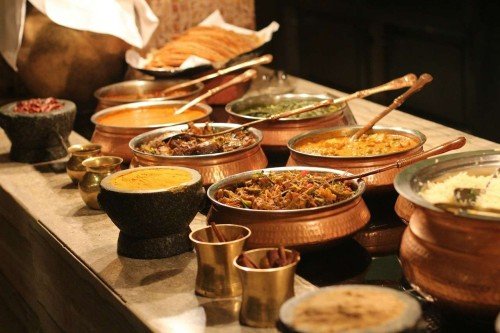
The restaurant industry in India has seen exponential growth in recent years. With changing lifestyles, urbanization, and a rise in disposable income, the demand for dining out has increased tremendously. The restaurant business in India is diverse, ranging from local street food vendors to luxury fine-dining establishments. This blog post will explore the restaurant industry in India, including its history, current status, challenges, and opportunities.
History of the Restaurant Business in India
The restaurant industry in India has a long and interesting history. The concept of dining out and hospitality is deeply rooted in Indian culture, and it can be traced back to ancient times. The concept of 'dhabas' or roadside eateries, was introduced during the Mughal era. These were small establishments that catered to travelers and locals and offered simple but flavorful food. Later, during the British rule, the restaurant industry saw significant growth with the introduction of western-style dining.
In the 20th century, with the rise of the middle class and the growth of the urban population, the restaurant industry in India began to flourish. With the advent of new technologies and global influences, the restaurant industry has seen tremendous growth in recent years.
The restaurant business in India has a rich history that dates back to ancient times. The Indian subcontinent has always been known for its diverse cuisine, and over the years, the restaurant business has grown to cater to the ever-increasing demand for food that is not only delicious but also healthy and affordable. In this blog post, we will delve into the history of the restaurant business in India and explore how it has evolved over the years.
Ancient Times
The history of restaurants in India can be traced back to ancient times, where travelers and merchants used to stop at rest houses and eateries called "Dhabas." These were simple roadside shacks that offered basic food and shelter to weary travelers. These rest houses were primarily built along the trade routes, which were used by the merchants to travel across the country.
During the Mughal era, the restaurant business began to take shape. The Mughal emperors were known for their love of food, and they were instrumental in bringing Persian and Central Asian cuisines to India. The Mughal emperors employed chefs from these regions to prepare their meals, and they also introduced new ingredients and spices to Indian cuisine.
The British Raj
The British Raj had a significant impact on the restaurant business in India. During this time, the British introduced new cuisines, such as European and Chinese, which were not readily available in India. They also brought with them new cooking techniques and equipment, such as ovens and stoves, which helped to revolutionize the Indian food industry.
The British also introduced the concept of "table service" in India, where customers would be seated at tables and served food by waiters. This was a departure from the traditional Indian style of eating, where people would sit on the floor and eat with their hands.
Post-Independence
After India gained independence, the restaurant industry in India began to take off. The government, recognizing the potential of the industry, started promoting tourism, which in turn led to an increase in the demand for restaurants. With the rise of the middle class and an increase in disposable income, people began to eat out more often, leading to the proliferation of restaurants across the country.
The 1980s saw the emergence of fast-food chains in India, such as McDonald's, Pizza Hut, and KFC. These chains were a huge hit with the youth and soon became synonymous with modernity and prosperity. However, there was also a backlash against these chains, with many people accusing them of promoting unhealthy eating habits.
The 1990s saw the emergence of the "theme restaurant" concept, where restaurants would offer a unique ambiance or theme to their customers. This was a departure from the traditional restaurant model, where the focus was solely on the food. The theme restaurant concept was a huge hit with the urban youth and soon became a popular trend.
The Present Day
The restaurant business in India has continued to grow over the years, with new restaurants opening up every day. The rise of food delivery apps such as Zomato and Swiggy has also led to an increase in the number of restaurants that offer delivery services. With the COVID-19 pandemic, the restaurant industry has faced significant challenges, with many restaurants shutting down due to the economic downturn.
However, the pandemic has also led to a rise in "cloud kitchens" or "virtual restaurants," which operate solely through online platforms. These cloud kitchens offer a variety of cuisines and are gaining popularity, especially among millennials.
Current Status of the Restaurant Business in India
The restaurant business in India is currently one of the fastest-growing industries in the country. According to a report by the National Restaurant Association of India (NRAI), the industry is expected to grow at a compound annual growth rate (CAGR) of 10% to reach INR 995 billion (USD 13.3 billion) by 2023.
The industry has seen significant changes in recent years, with the introduction of new dining concepts and technologies. The rise of food delivery apps and online ordering has led to a significant increase in the number of restaurants offering delivery services. This has not only increased convenience for customers but has also opened up new business opportunities for restaurants.
Challenges Faced by the Restaurant Business in India
While the restaurant business in India is thriving, it is not without its challenges. One of the biggest challenges faced by the industry is the shortage of skilled labor. Finding trained and experienced chefs, managers, and waitstaff is a constant struggle for restaurant owners.
Another challenge faced by the industry is the high cost of real estate. Rent and lease costs are significant expenses for restaurant owners, especially in prime locations. In addition, the restaurant industry is highly competitive, and restaurants must continually innovate and improve to stay ahead of the competition.
Opportunities for the Restaurant Business in India
Despite the challenges, there are significant opportunities for growth and expansion in the restaurant industry in India. One of the most significant opportunities is the rise of the middle class and the growth of the urban population. With increasing disposable income and changing lifestyles, more people are eating out than ever before.
Another significant opportunity is the rise of food delivery and online ordering. With the growth of technology and the increased convenience offered by food delivery apps, restaurants can now reach a wider audience than ever before.
The increasing popularity of healthy eating and the demand for sustainable and locally-sourced ingredients also presents a significant opportunity for the restaurant industry. Restaurants that focus on offering fresh, healthy, and sustainably-sourced food are likely to attract a growing customer base.
Conclusion
In conclusion, the restaurant industry in India is a thriving and dynamic industry that has seen significant growth in recent years. The industry faces challenges such as a shortage of skilled labor and high real estate costs, but there are significant opportunities for growth and expansion. With the rise of the middle class, the growth of the urban population, and the increasing popularity of food delivery and healthy eating, the restaurant industry in India is well-positioned for continued success in the coming years.








